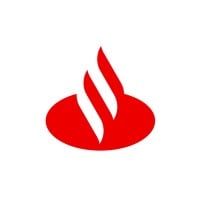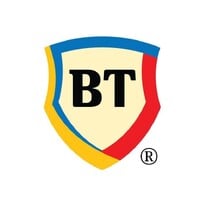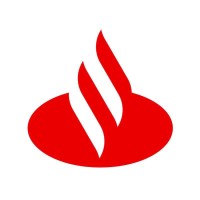Company Cyber Security Posture
NANA
NA Company Details
NA
NA
NA
NA
NA
NA
Scan still pending
NA
NA
Between 200 and 800
This score is AI-generated and less favored by cyber insurers, who prefer the TPRM score.
 NA Global Score
NA Global Score.png)

Company Scoring based on AI Models
| Model Name | Date | Description | Current Score Difference | Score |
|---|---|---|---|---|
| AVERAGE-Industry | 03-12-2025 | This score represents the average cybersecurity rating of companies already scanned within the same industry. It provides a benchmark to compare an individual company's security posture against its industry peers. | N/A | Between 200 and 800 |
Company Cyber Security News & History
| Entity | Type | Severity | Impact | Seen | Url ID | Details | View |
|---|
Company Subsidiaries

NA
Access Data Using Our API

Get company history
.png)
NA Cyber Security News
Egypt’s Commercial International Bank ventures into fintech investment land
The bank says this is the first corporate venture capital firm in Egypt primarily focused on investing in fintech start-ups.
Morocco, Egypt Lead Northern Africa’s DDoS Attack Rankings
As Northern African nations continue their rapid digital transformation, this expanding connectivity can be viewed both as a vital enabler ...
Egypt’s Commercial International Bank names Tony Prestedge as executive board advisor
The Commercial International Bank (CIB), one of the largest private sector banks in Egypt, has hired “veteran transformation banker” Tony ...
Data protection, cybersecurity key to ensure reliability of digital services in Africa: Ezz Al-Arab
Ezz Al-Arab stressed the need for detection systems for anomalies, such as the early warning system to combat financial crime in Africa.
Allianz, CIB Egypt sign cyber insurance contract for banking services
German insurance giant Allianz has signed a contract with the Commercial International Bank – Egypt (CIB) to provide insurance product that ...
CAISEC’25 To Launch Fourth Edition On May 25 Under The Auspices Of The Prime Minister
Over 5,000 professionals and decision-makers from sectors such as finance, energy, AI, critical infrastructure, and fintech are expected to ...

NA Similar Companies

Crédit Agricole Italia
Crédit Agricole Italia fa parte del grande Gruppo internazionale Crédit Agricole: un gruppo bancario tra i più solidi nel panorama internazionale e presente in 46 Paesi del mondo, con 53 milioni di Clienti. Il Gruppo Crédit Agricole in Italia conta 6 milioni di Clienti attivi e circa 16.200 collabor

IDBI Bank
Welcome to IDBI Bank's LinkedIn page! We are a leading bank in India, with a rich legacy. At IDBI Bank, we believe in empowering our customers by providing them with a wide range of banking products and services to meet their financial needs. Whether you are an individual, a small business owner,

Caja Madrid
CAJA MADRID is the fourth Spanish financial group and it holds an outstanding position in credit markets and client resources. The CAJA MADRID Group offers a complete range of products and services of retail banking, business banking and private banking, with which it attends to the needs of 7 mi

Santander UK
Our purpose at Santander UK is to help people and businesses prosper. We are a leading financial services provider, offering a wide range of personal and commercial financial products and services, with around 15 million customers across our Retail and Corporate Businesses. We have set ourselves a

Banca Transilvania
Bun gasit. Noi suntem banca oamenilor intreprinzatori. 💛 Sau mai bine spus, compania care isi doreste ca lucrurile sa fie facute, ideile valorificate, iar visele implinite, sustinand oamenii care au curajul sa faca lucrurile putin mai diferit. Multi cred ca bankingul e doar despre bani, credite si

Santander
Banco Santander (SAN SM, STD US, BNC LN) is a leading commercial bank, founded in 1857 and headquartered in Spain and one of the largest banks in the world by market capitalization. The group’s activities are consolidated into five global businesses: Retail & Commercial Banking, Digital Consumer Ban

Frequently Asked Questions
Explore insights on cybersecurity incidents, risk posture, and Rankiteo's assessments.
NA CyberSecurity History Information
How many cyber incidents has NA faced?
Total Incidents: According to Rankiteo, NA has faced 0 incidents in the past.
What types of cybersecurity incidents have occurred at NA?
Incident Types: The types of cybersecurity incidents that have occurred include .
Additional Questions
What Do We Measure?
















Every week, Rankiteo analyzes billions of signals to give organizations a sharper, faster view of emerging risks. With deeper, more actionable intelligence at their fingertips, security teams can outpace threat actors, respond instantly to Zero-Day attacks, and dramatically shrink their risk exposure window.
These are some of the factors we use to calculate the overall score:
Identify exposed access points, detect misconfigured SSL certificates, and uncover vulnerabilities across the network infrastructure.
Gain visibility into the software components used within an organization to detect vulnerabilities, manage risk, and ensure supply chain security.
Monitor and manage all IT assets and their configurations to ensure accurate, real-time visibility across the company's technology environment.
Leverage real-time insights on active threats, malware campaigns, and emerging vulnerabilities to proactively defend against evolving cyberattacks.




